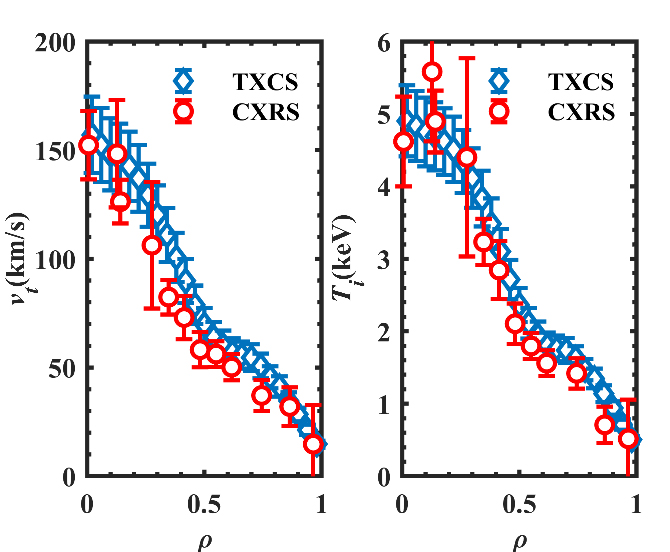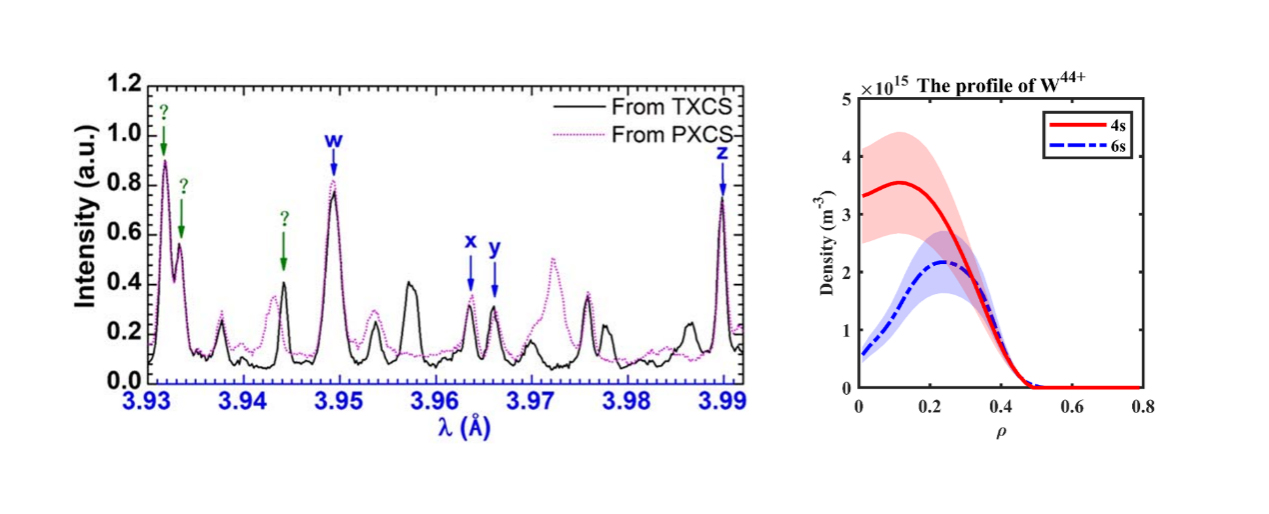
A research team at the Hefei Institutes of Physical Science (HFIPS) of Chinese Academy of Sciences (CAS), led by Prof. Lyu Bo, enhanced the diagnostic accuracy of X-ray Crystal Spectroscopy (XCS)and investigated a range of fusion reactor related spectral lines about tungsten (W) and xenon (Xe) on the EAST.
The relevant results were published in Nuclear Fusion and Physics of Plasmas, among other journals.
Rotation velocity and ion temperature profiles are fundamental in various plasma physics researches. Currently, on EAST, XCS can provide localized radial profiles of aforementioned parameters by analyzing argon (Ar) spectra with a newly developed inversion technique. However, as plasma parameters increase, the Ar spectra are insufficient for diagnostic purposes in future. Hence, studying high-Z impurities such as W and Xe are crucial for the aforementioned parameters for future fusion reactor.
The research group conducted extensive research on the W impurity spectra based on XCS, which enables the measurements of core plasma rotation velocity and ion temperature for fusion reactors. Through optimization of the diagnostic system's wavelength observation range, the development of an inversion method for the W impurity radiation profile, and in-situ intensity calibration techniques, the research team successfully obtained multiple spectral lines related to W impurity.
Furthermore, one of the key physics and technical challenges currently faced by fusion research is how to control W impurity concentration within an acceptable range. Physical experiments focusing on the control of W impurities were conducted on the EAST system. The above-mentioned method allowed for the direct observation of the mitigation effect of radio-frequency core heating on the accumulation of impurities.
Additionally, a feasibility study was conducted on measuring high-parameter plasma ion temperature and rotation velocity through the analysis of Xe spectral profiles. Firstly, the feasibility was confirmed by the atomic physics simulation program. Subsequently, in the EAST physics experiment, Xe spectral lines that align with theoretical predictions were measured for the first time, enabling the determination of ion temperature and other ionizing parameters through Xe impurity spectral line analysis.
Overall, this research contributes to the advancement of plasma physics research, enhances XCS diagnostic capabilities on EAST, and provides valuable insights into the XCS diagnostics of plasma in fusion reactor scenarios.

Inverted rotation velocity and ion temperature profiles by XCS compared with Charge Exchange Recombination Spectroscopy (XCRS). (Image by LIN Zichao)

(Left)Typical spectral lines measured by the XCS on EAST,(Right) The impurity density profiles of W44+. (Image by LIN Zichao)